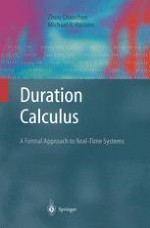Duration calculus constitutes a formal approach to the development of real-time systems; as an interval logic with special features for expressing and analyzing time durations of states in real-time systems, it allows for representing and formally reasoning about requirements and designs at an appropriate level of abstraction.
This book presents the logical foundations of duration calculus in a coherent and thorough manner. Through selective case studies it explains how duration calculus can be applied to the formal specification and verification of real-time systems. The book also contains an extensive survey of the current research in this field.
The material included in this book has been used for graduate and postgraduate courses, while it is also suitable for experienced researchers and professionals.
